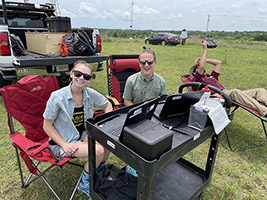May 24 - July 30
Photo Collection
Oklahoma Mesonet Instrumentation and Calibration Lab
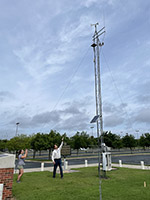
Dr. Illston explains the instruments at the top of an Oklahoma mesonet tower, at 10m AGL (above ground level)
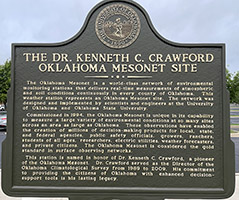
The Dr. Kenneth C. Crawford Oklahoma Mesonet Site. The Oklahoma Mesonet is a world-class network of environmental monitoring stations that delivers real-time measurements of atmospheric and soil conditions continuously in every county in Oklahoma. The network was designed and implemented by scientists and engineers at the University of Oklahoma and Oklahoma State University.
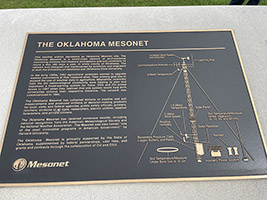
Each mesonet station has sensors for measuring 10-meter wind speed and direction, communications antennas, and a lightning rod at the top. Just below, a sensor measures the temperature at 9m above ground level (AGL). Another temperature sensor is at 1.5m, allowing mesonet stations to identify inversion conditions. Also lower down the tower are: a solar panel and sensors for solar radiation measurements, 2m wind speed, relative humidity and barometric pressure. Nearby the tower are two sets of soil temperature and moisture measurements, one under bare ground and one under vegetation characteristic of the site. Two rain gagues are surrounded by baffles that create turbulence that helps wind-driven rain fall into the buckets. Data loggers and batteries complete the system.
Kessler Atmospheric and Ecological Field Station
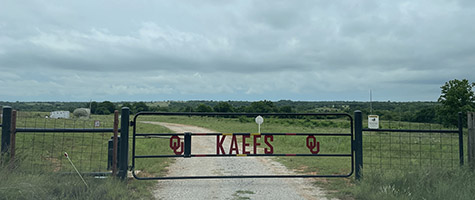
Gate to the Kessler Atmospheric and Ecological Field Station

The PX1000 radar was operating at KAEFS
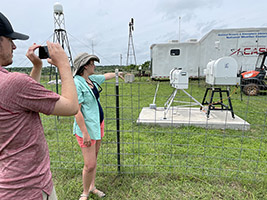
Dr. Smith explains the radiometers that either were or will be installed in the CLAMS2 trailer.

This is the lidar. The mechanisms allow it to be raised through the trailer roof for taking data.
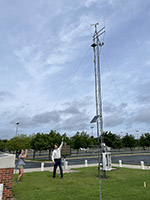
Dr. Illston explains the instrumentation on a mesonet station
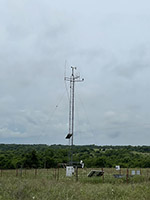
KAEFS is the site of the Washington Mesonet station

We hope to hear more about this tower next week.
Takeoff and landing site of the drone that samples atmospheric gases and winds in the lowest 4,000' of the atmosphere
Francesca (REU17) and Brian monitor data coming in from the drones

